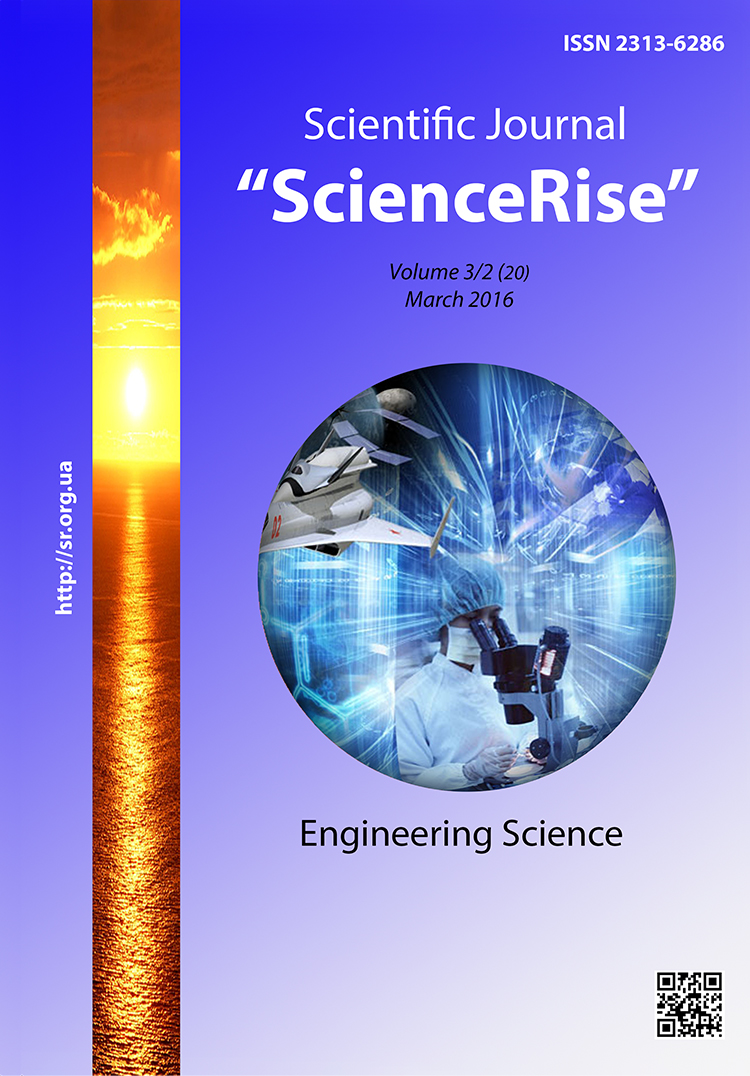Recognition of the reference signals at interference generation and loss at random times
DOI:
https://doi.org/10.15587/2313-8416.2016.64500Keywords:
signal recognition, disproportionate features, additive interference, random interference, pulse, signal fragmentAbstract
This article describes the reference of the signal recognition method, which is superimposed on the random additive interference. References, in turn, can be various types of pulses, which makes impossible the calculation of their derivatives in some times. Also, reference includes in the analyzed signal with a certain advance unknown scale factor. The proposed method allows determining a fragment of the references included in the analyzed signal at random time
References
Bezruk, V. M., Lebedev, O. G. (2012). Recognition of predetermined signals in the automated radio monitoring problems. Eastern-European journal of enterprise technologies, 5/9 (59), 47–50. Available at: http://journals.uran.ua/eejet/article/view/4628/4283
Deglina, Ju. B. (2006). Nejrosetevoj algoritm raspoznavanija signalov akusticheskoj jemissii. Shtuchnij іntelekt, 4, 731–734. Available at: http://iai.dn.ua/public/JournalAI_2006_4/Razdel8/13_Deglina.pdf
Spravochnaja sistema po moduljam Digispot II. Available at: http://redmine.digispot.ru/projects/digispot/wiki/WikiStart
Barhatov, V. A. Obnaruzhenie signalov i ih klassifikacija s pomoshh'ju raspoznavanija obrazov. IC Fizpribor. Available at: http://fpribor.ru/uploadedFiles/files/Patern_Recognition_1.pdf
Danilov, V. N. (2007). K ocenke jehosignalov ot dvugrannyh uglov v obrazcah s cilindricheskimi poverhnostjami. Defektoskopija, 7, 35–42.
Zaprjagaev, S. A., Konovalov, A. Ju. (2009). Raspoznavanija rechevyh signalov. Vestnik VGU, Serija: sistemnyj analiz i informacionnye tehnologii, 2, 39–48. Available at: http://www.vestnik.vsu.ru/pdf/analiz/2009/02/2009-02-08.pdf
Mehra, P. (1992). Artifical Neural Networks: Concepts and Theory. IEEE Computer Society Press, 680.
Osovskij, S. (2004). Nejronnye seti dlja obrabotki informaci. Moscow: Finansy i statistika, 344.
Avramenko, V. V., Slepushko, N. Ju. (2009). Raspoznavanie jetalonnyh signalov pri nepolnoj informacii o harakteristikah pomeh. Vestnik SumGU. Tehnicheskie nauki, 3, 13–19.
Avramenko, V. V., Karpenko, A. P. (2002). Raspoznavanie fragmentov zadannyh jetalonov v analiziruemom signale s pomoshh'ju funkcij neproporcional'nosti. Vіsnik Sums'kogo derzhavnogo unіversitetu, 1 (34), 96.
Downloads
Published
Issue
Section
License
Copyright (c) 2016 Антон Евгеньевич Коноплянченко, Виктор Васильевич Авраменко, Иванович Прохненко Юрий

This work is licensed under a Creative Commons Attribution 4.0 International License.
Our journal abides by the Creative Commons CC BY copyright rights and permissions for open access journals.
Authors, who are published in this journal, agree to the following conditions:
1. The authors reserve the right to authorship of the work and pass the first publication right of this work to the journal under the terms of a Creative Commons CC BY, which allows others to freely distribute the published research with the obligatory reference to the authors of the original work and the first publication of the work in this journal.
2. The authors have the right to conclude separate supplement agreements that relate to non-exclusive work distribution in the form in which it has been published by the journal (for example, to upload the work to the online storage of the journal or publish it as part of a monograph), provided that the reference to the first publication of the work in this journal is included.

